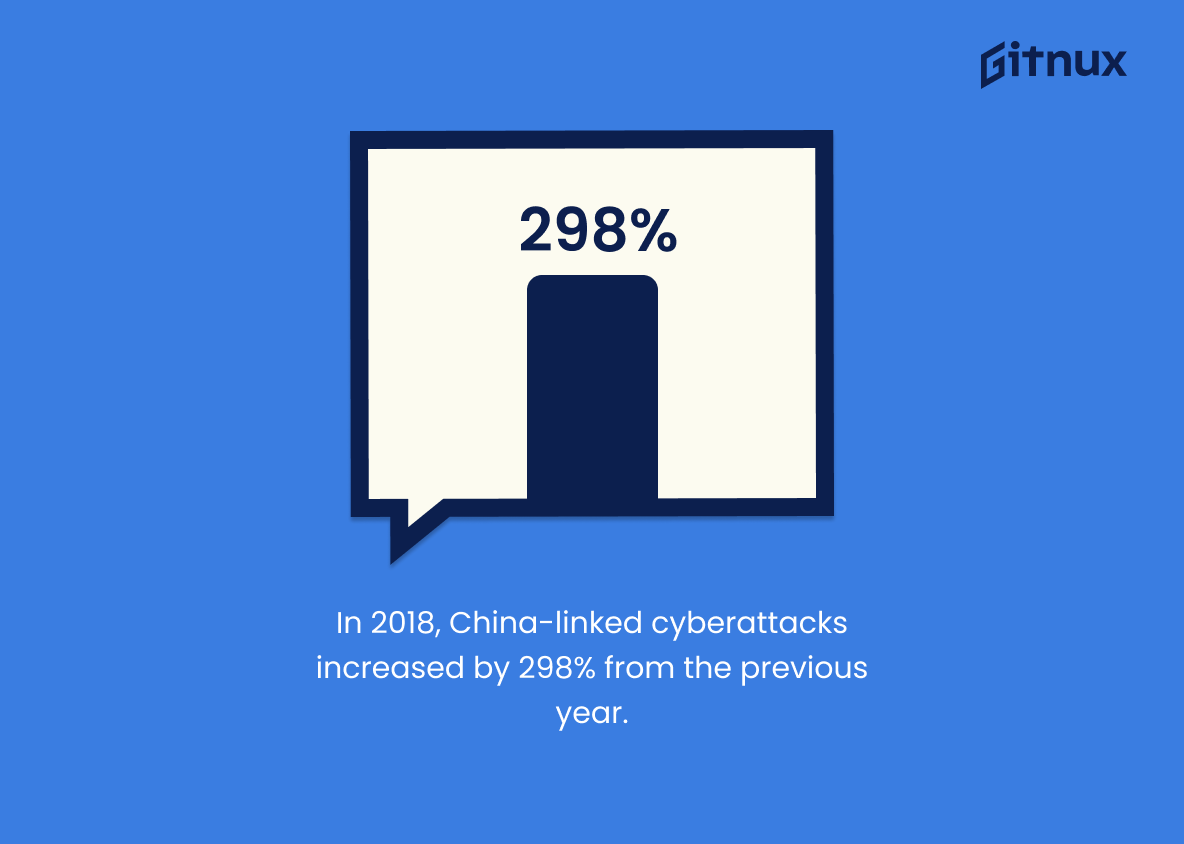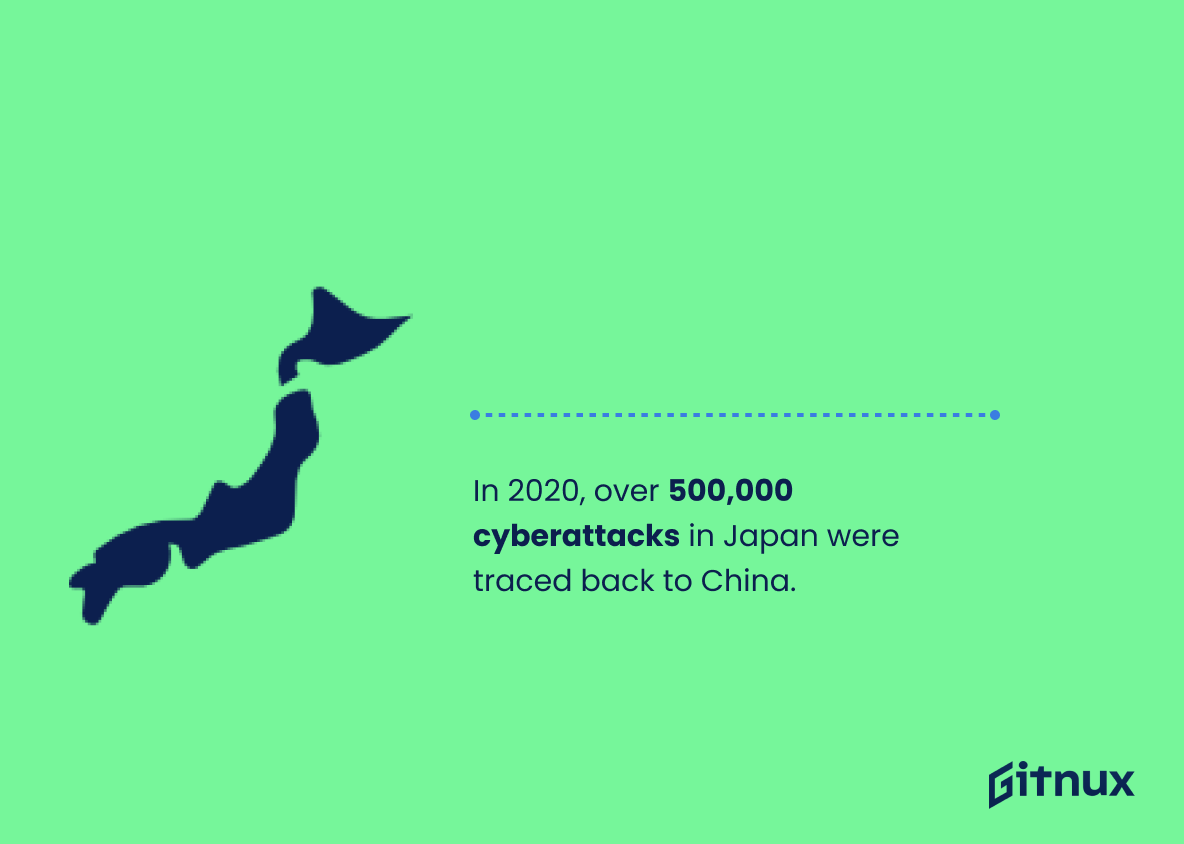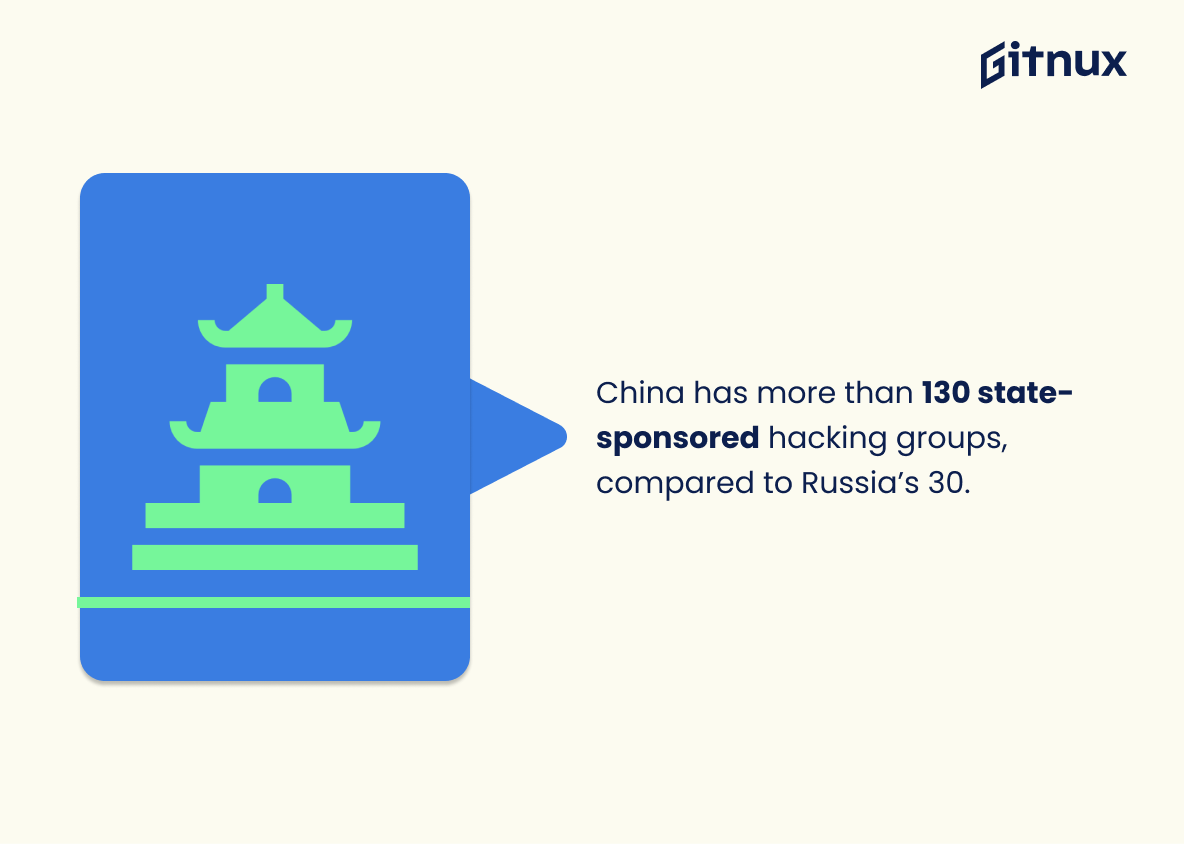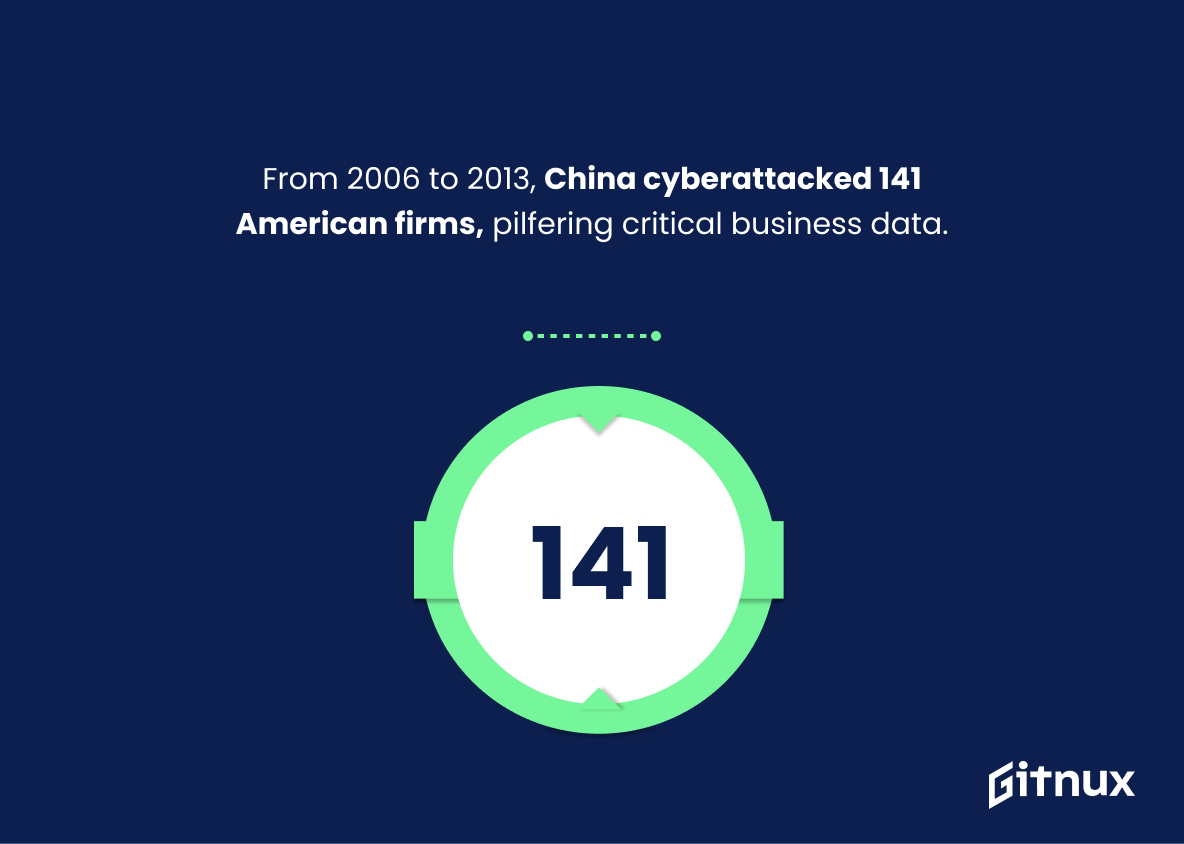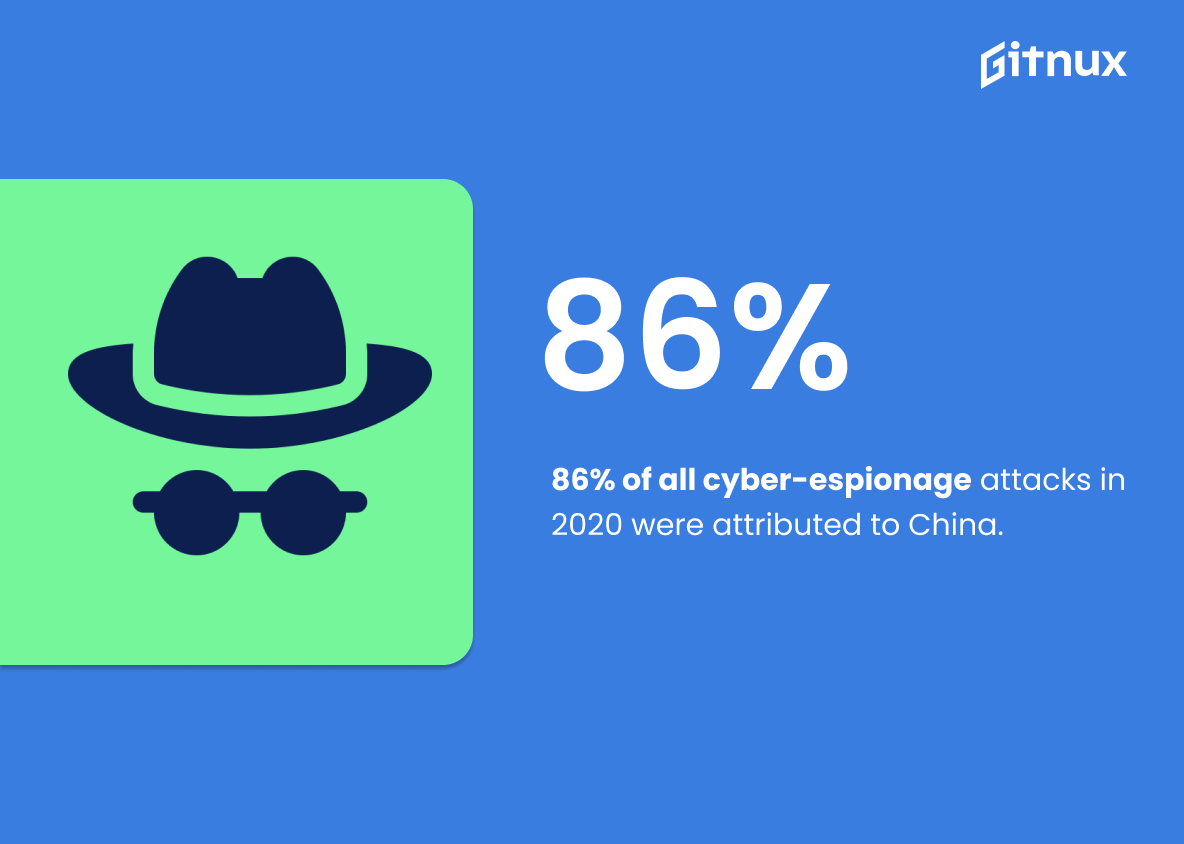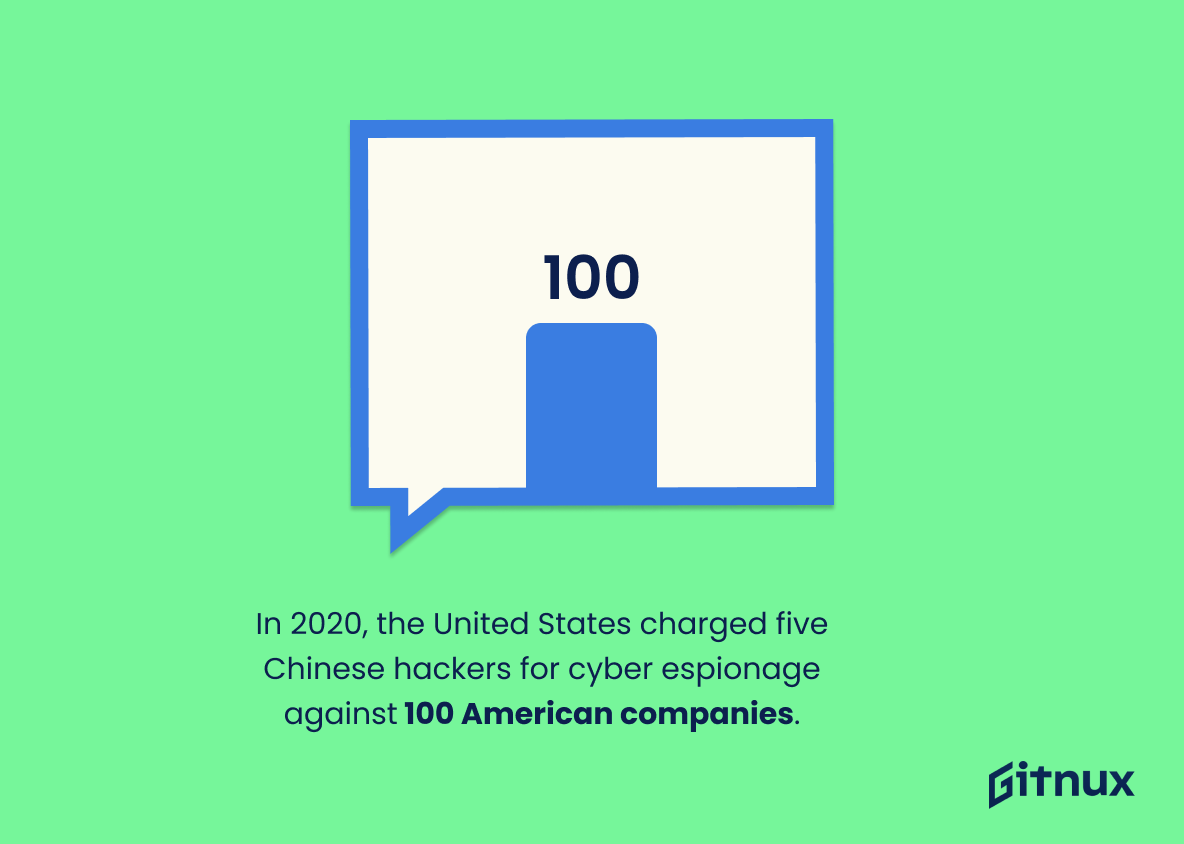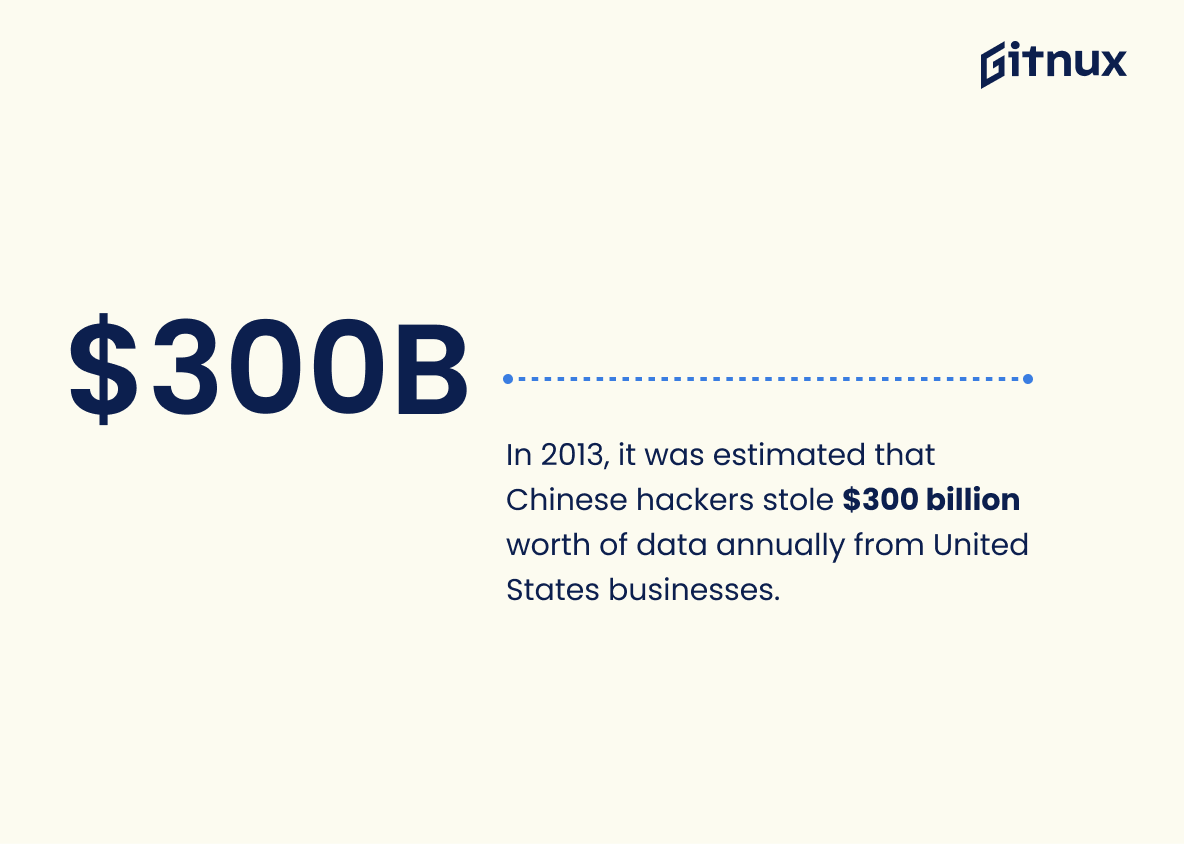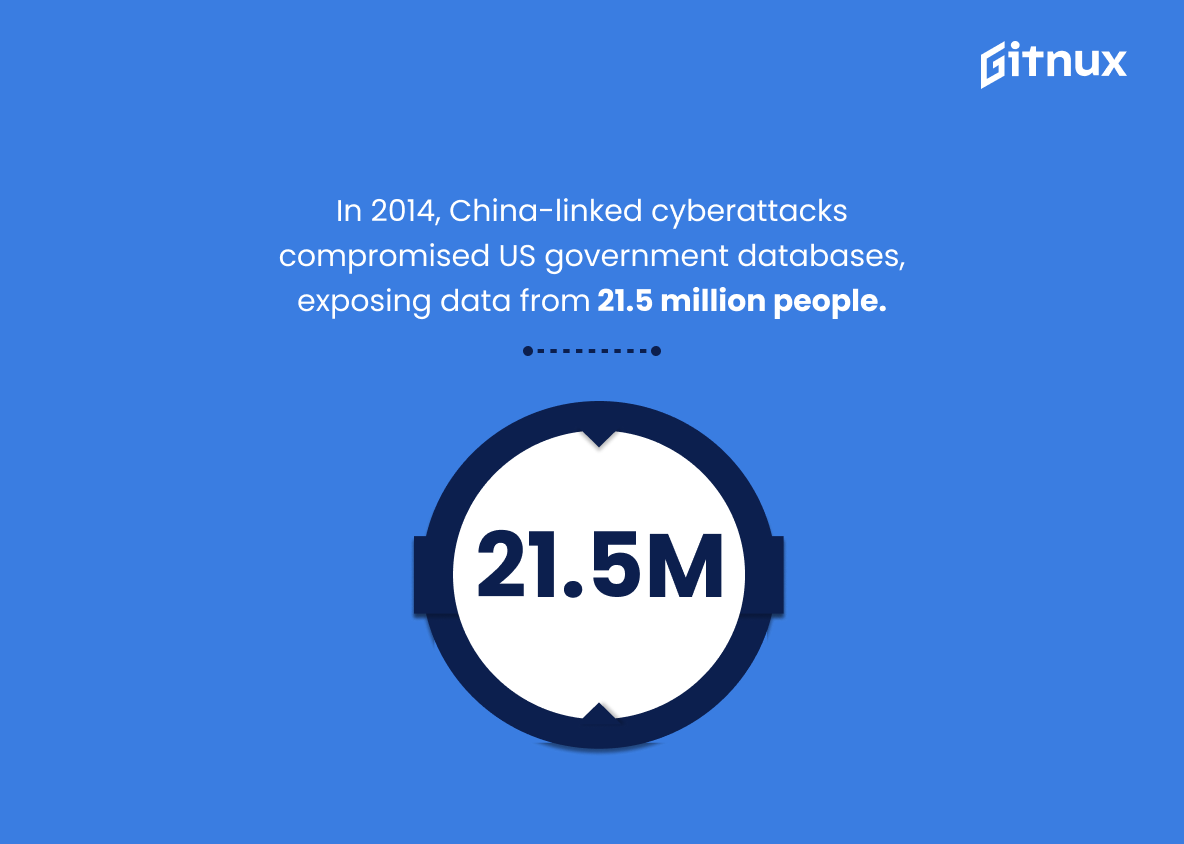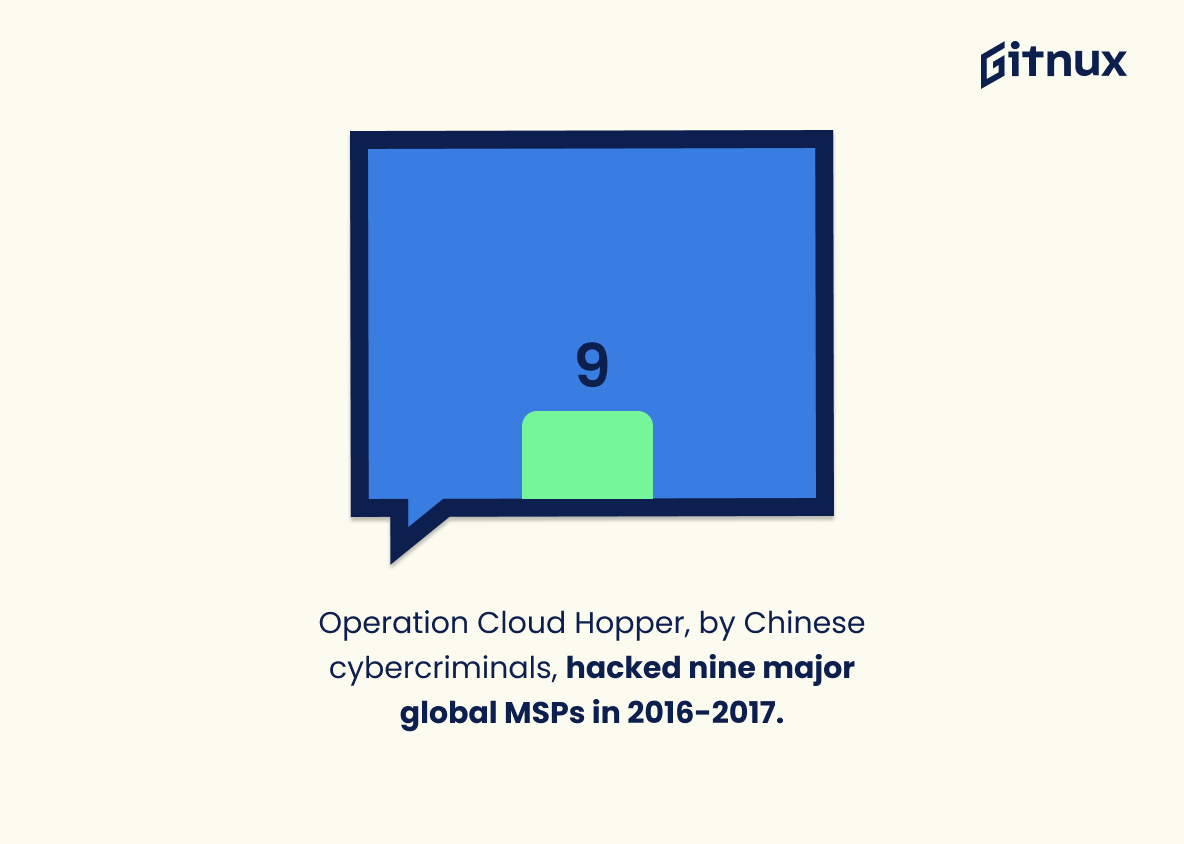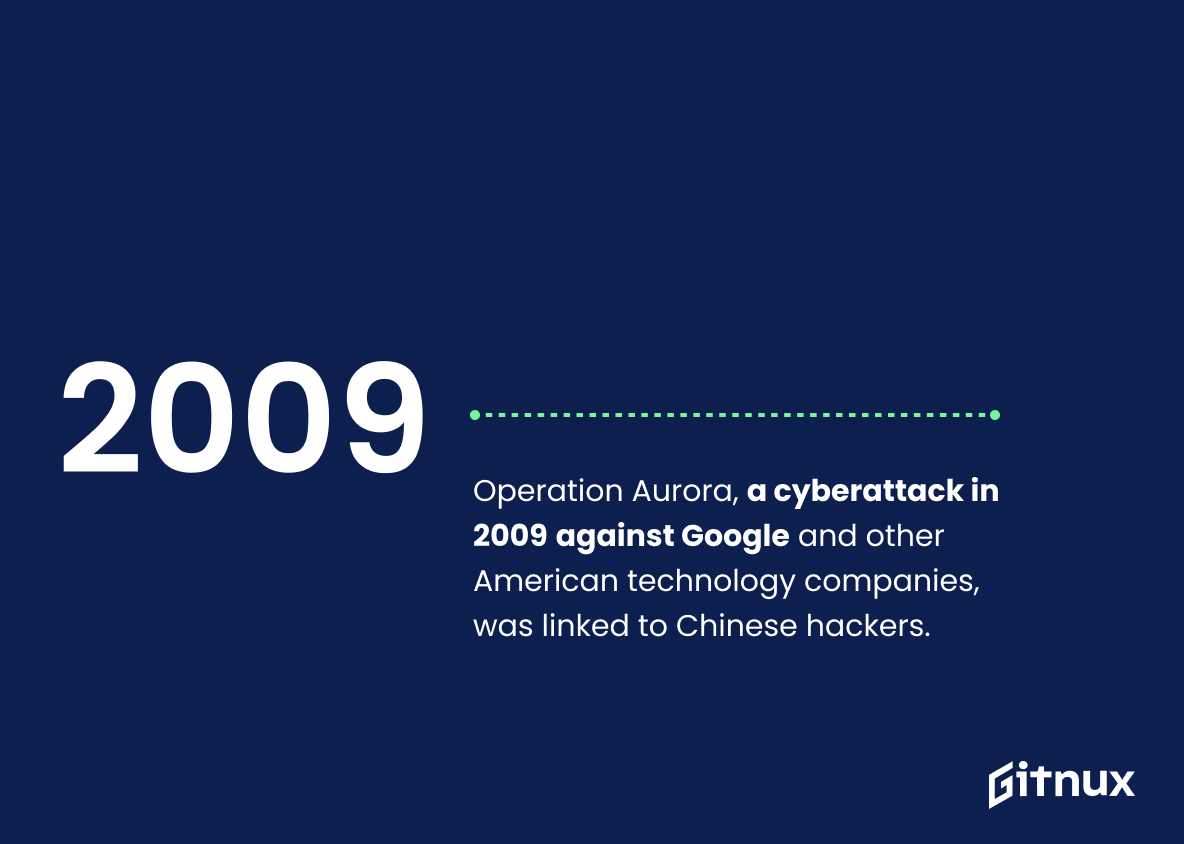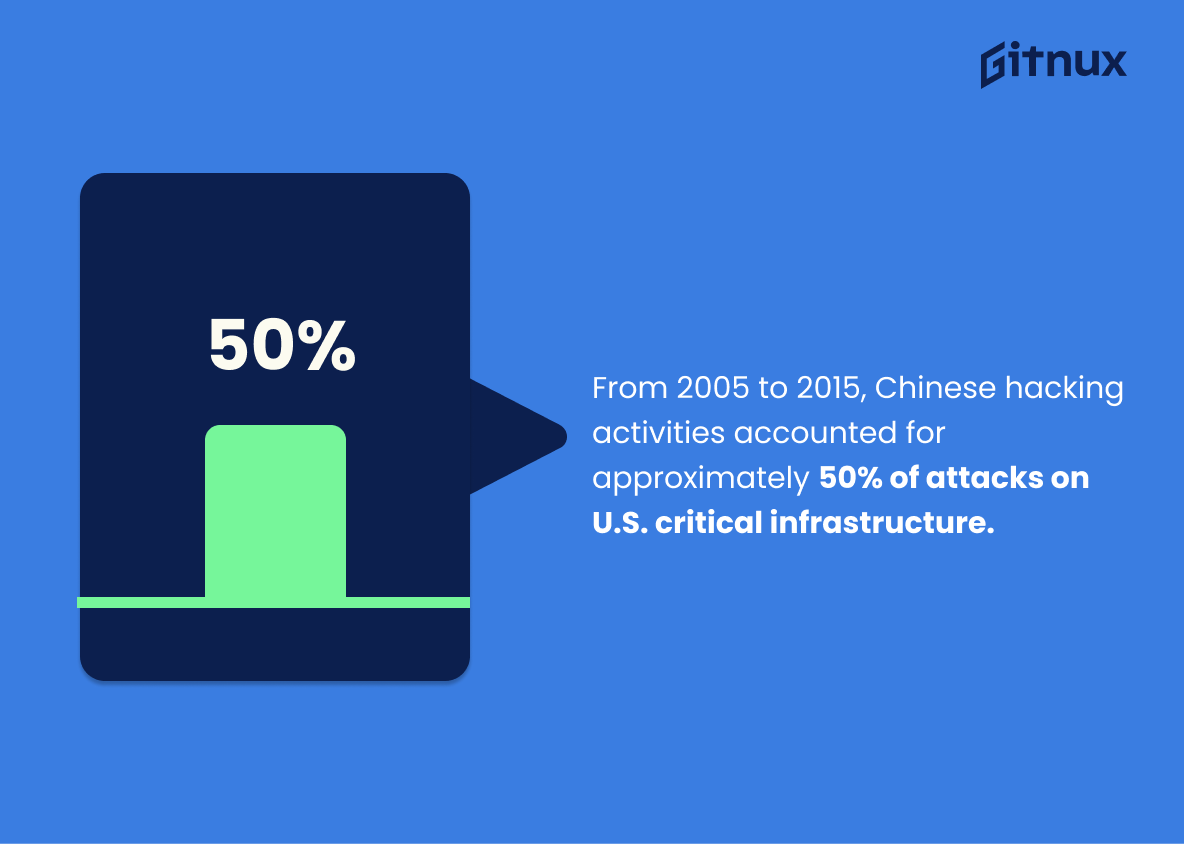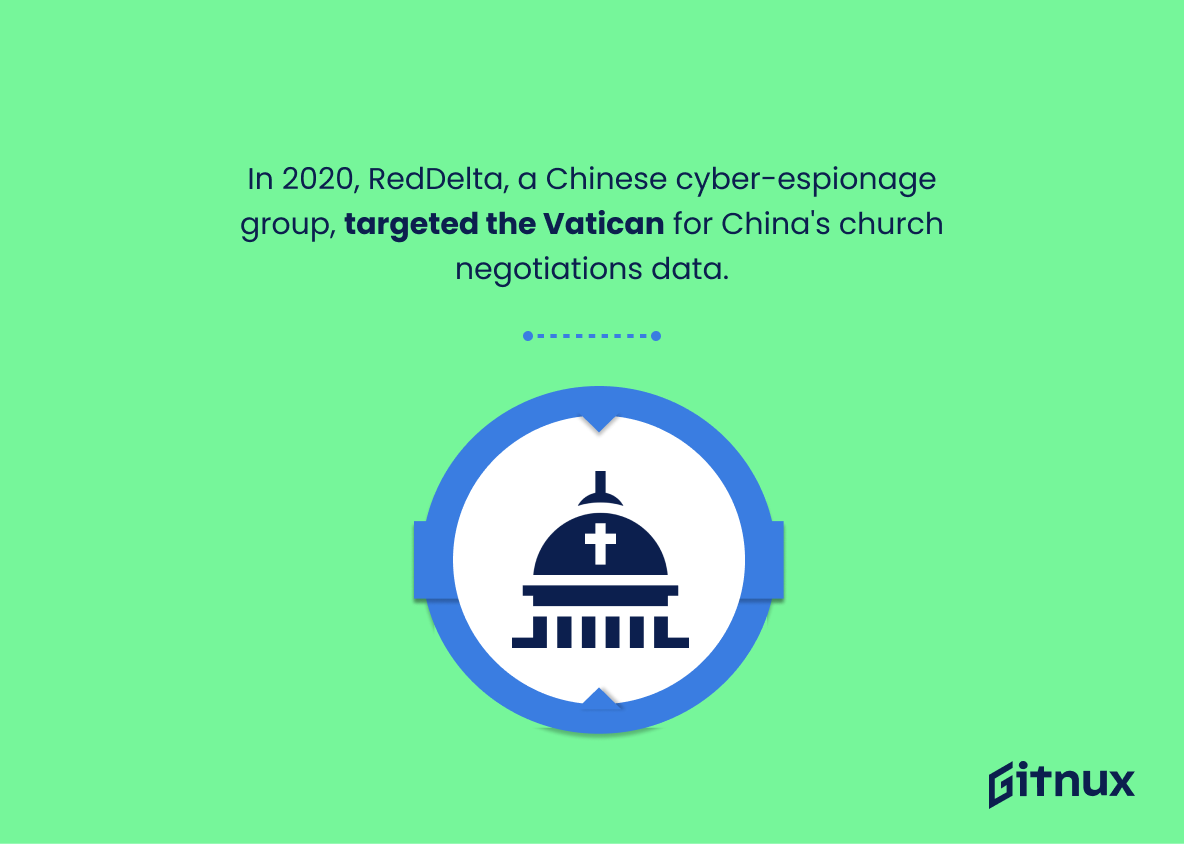The world of cyber security is constantly evolving, and the threat posed by Chinese hackers has become increasingly prominent in recent years. From 2009 to 2019, the Chinese APT group APT10 targeted at least 45 technology companies and U.S. government agencies; by 2020 China was responsible for 25% of all global cyber attacks; more than 23,000 cybersecurity incidents were reported in China in 2016; there was a 298% increase from 2017 to 2018 when it comes to China-linked cyberattacks; over 500,000 cyberattacks traced back to China occurred in Japan during 2020 alone; 130 state-sponsored hacking groups are attributed to China compared with Russia’s 30 groups between 2006 and 2013 – 141 American companies had their valuable business information stolen as part of this campaign – 86% of all cyberespionage attacks last year were linked back to Chinese actors – five individuals connected with the country have been charged for espionage against 100 US firms – $300 billion worth of data annually is estimated as being taken from US businesses since 2013 – 41 percent supply chain hacks globally can be attributed directly or indirectly towards those based out of mainland china– Operation Cloud Hopper compromised nine major MSPs across two years (2016/17)– 200 percent rise seen on Australia’s networks due solely too activity originating within its borders– Operation Aurora saw Google amongst other tech giants hacked via malicious code planted into systems belonging too them which originated from Beijing — RedDelta infiltrated Vatican computer networks looking for intel regarding negotiations between Rome & Beijing– 50 %of critical infrastructure breaches occurring within America 2005-2015 could be sourced back too Mainland china– 150 campaigns targeting telecommunications & defense industries discovered 2021—all these statistics point towards an alarming trend that needs addressing sooner rather than later if we want our digital lives safe guarded going forward .
Chinese Cyber Attack Statistics Overview
More than 23,000 cybersecurity incidents were reported in China in 2016.
This statistic is a stark reminder of the reality of cyber threats in China. It highlights the need for increased vigilance and security measures to protect against malicious cyber activity. It also serves as a warning to other countries that cyber threats are a global issue and that no one is immune from them. The sheer number of incidents reported in 2016 is a testament to the severity of the problem and the need for greater awareness and action.
In 2018, China-linked cyberattacks increased by 298% from the previous year.
This statistic is a stark reminder of the growing threat of Chinese cyberattacks. It highlights the need for increased vigilance and security measures to protect against malicious actors. The 298% increase in attacks from the previous year is a clear indication that China is becoming increasingly aggressive in its cyber activities, and that organizations must take steps to protect themselves from these threats.
In 2020, over 500,000 cyberattacks in Japan were traced back to China.
This statistic is a stark reminder of the potential danger posed by Chinese cyberattacks in Japan. It highlights the need for increased vigilance and security measures to protect against such attacks, and serves as a warning to other countries that may be vulnerable to similar threats. It is a stark reminder that cyberattacks can have serious consequences, and that no country is immune to them.
China has more than 130 state-sponsored hacking groups, compared to Russia’s 30.
This statistic is a stark reminder of the sheer magnitude of China’s cyber attack capabilities. With more than 130 state-sponsored hacking groups, China has a formidable presence in the cyber security landscape, far outstripping Russia’s 30. This is a clear indication of the level of sophistication and resources that China is willing to invest in cyber warfare.
From 2006 to 2013, China conducted a cyberattack campaign targeting 141 American companies, stealing valuable business information.
This statistic serves as a stark reminder of the potential consequences of Chinese cyberattacks. It highlights the fact that these attacks are not only a threat to national security, but also to the economic security of American companies. It is a reminder that Chinese cyberattacks are a real and present danger, and that companies must take steps to protect themselves from these attacks.
86% of all cyber-espionage attacks in 2020 were attributed to China.
This statistic is a stark reminder of the extent to which China has been involved in cyber-espionage attacks in 2020. It highlights the need for increased vigilance and security measures to protect against such attacks, as well as the need to better understand the motivations and methods of Chinese hackers. This statistic is an important piece of the puzzle when it comes to understanding the full scope of Chinese cyber-attacks and the potential implications for the global digital landscape.
In 2020, the United States charged five Chinese hackers for cyber espionage against 100 American companies.
This statistic serves as a stark reminder of the severity of Chinese cyber attacks against American companies. It highlights the fact that these attacks are not only occurring, but that they are being actively pursued and prosecuted by the United States. It is a clear indication that the US is taking the threat of Chinese cyber espionage seriously and is willing to take action to protect its companies.
In 2013, it was estimated that Chinese hackers stole $300 billion worth of data annually from United States businesses.
This statistic is a stark reminder of the immense threat posed by Chinese hackers to US businesses. It highlights the sheer scale of the data theft that is occurring, and the need for businesses to take steps to protect themselves from such attacks. It also serves as a warning to other countries that may be vulnerable to similar attacks, and the need to take appropriate measures to protect their data.
Chinese cybercriminals were responsible for 41% of supply chain attacks in 2019.
This statistic is a stark reminder of the prevalence of Chinese cybercriminals in the realm of supply chain attacks. It serves as a warning to organizations to be vigilant in their security measures and to be aware of the potential risks posed by Chinese cybercriminals. It also highlights the need for organizations to take proactive steps to protect their supply chains from malicious actors.
The 2014 cyberattacks on United States government databases resulted in the theft of personal information of 21.5 million people, mainly attributed to China.
This statistic serves as a stark reminder of the potential consequences of cyberattacks, particularly those originating from China. It highlights the need for increased security measures to protect government databases and the personal information of millions of people. As such, it is an important piece of data to consider when discussing Chinese cyber attack statistics.
The state-sponsored hacking group from China, APT40, targets maritime and naval organizations, including naval shipbuilders and research institutions.
This statistic is a stark reminder of the threat posed by APT40, a state-sponsored hacking group from China. It highlights the fact that the group is actively targeting maritime and naval organizations, which could have serious implications for the security of these organizations and the safety of those who rely on them. This statistic is a reminder that Chinese cyber attacks are a real and present danger, and that organizations must take steps to protect themselves.
Operation Cloud Hopper, a hacking campaign by Chinese cybercriminals, compromised at least nine major global managed service providers (MSPs) in 2016 and 2017.
The statistic of Operation Cloud Hopper serves as a stark reminder of the immense power of Chinese cybercriminals. It highlights the fact that even the most secure managed service providers are vulnerable to attack, and that the threat of Chinese cybercrime is very real. This statistic is a powerful reminder that no one is safe from the reach of Chinese cybercriminals, and that vigilance and proactive security measures are essential to protect against such attacks.
Operation Aurora, a cyberattack in 2009 against Google and other American technology companies, was linked to Chinese hackers.
The statistic of Operation Aurora serves as a stark reminder of the potential consequences of Chinese cyberattacks. It highlights the need for vigilance and proactive measures to protect against such attacks, and serves as a warning to other companies that may be targeted in the future. By providing a concrete example of the damage that can be done, this statistic helps to illustrate the severity of the threat posed by Chinese hackers.
From 2005 to 2015, Chinese hacking activities accounted for approximately 50% of attacks on U.S. critical infrastructure.
This statistic is a stark reminder of the immense threat posed by Chinese hacking activities to U.S. critical infrastructure. It highlights the need for increased vigilance and security measures to protect against such attacks, as well as the need for greater international cooperation to combat this growing problem.
In 2020, an infamous Chinese cyber-espionage group, RedDelta, targeted the Vatican and other Catholic organizations to gain information on China’s negotiations with the Catholic church.
This statistic is a stark reminder of the reality of Chinese cyber-espionage and the lengths they are willing to go to gain information. It highlights the need for organizations to remain vigilant and take steps to protect themselves from such attacks. It also serves as a warning to other organizations that may be targeted in the future, and emphasizes the importance of understanding the potential risks associated with cyber-attacks.
Conclusion
After analyzing the statistics, it is clear that China has been a major player in cyber attacks for many years. From 2009 to 2019, APT10 targeted at least 45 technology companies and U.S. government agencies; by the end of 2020, they were responsible for 25% of all global cyberattacks; more than 23,000 cybersecurity incidents were reported in 2016 alone; Chinese-linked cyberattacks increased by 298% from 2017 to 2018; over 500,000 attacks on Japan have been traced back to China since 2020; there are 130 state-sponsored hacking groups compared with Russia’s 30 groups and 86% of all espionage attacks in 2020 can be attributed to them as well. Furthermore, Chinese hackers stole $300 billion worth of data annually from United States businesses between 2006 and 2013 while 41% of supply chain attacks occurred due their activities in 2019. In addition Operation Cloud Hopper compromised nine MSPs while Operation Aurora was linked to Chinese hackers who also accounted for 50 percent of critical infrastructure attack attempts during 2005 – 2015 period before targeting Vatican networks last year alongside other Catholic organizations which resulted into 200 % increase against Australia same year . All these facts point towards an alarming trend where China continues its malicious activities across various industries worldwide making it one among top countries when it comes down Cyber Security threats today
References
0. – https://www.atlasvpn.com
1. – https://www.japantimes.co.jp
2. – https://www.reuters.com
3. – https://www.wired.com
4. – https://www.rand.org
5. – https://www.interpol.int
6. – https://www.nytimes.com
7. – https://www.thehill.com
8. – https://www.pwc.co.uk
9. – https://www.zdnet.com
10. – https://www.fireeye.com
11. – https://www.instapaper.com
12. – https://www.justice.gov
13. – https://www.cybereason.com
14. – https://www.chinadaily.com.cn

